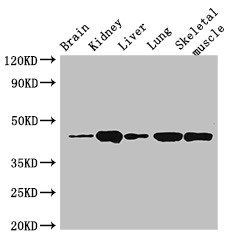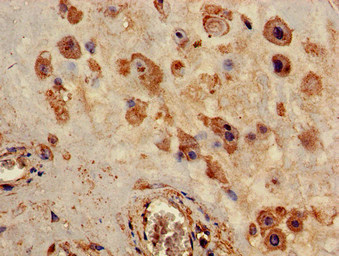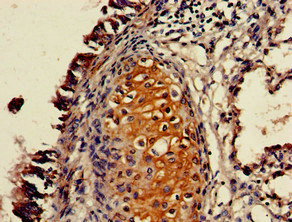Full Product Name
Rabbit anti-Homo sapiens (Human) P2RX4 Polyclonal antibody
Alternative Names
AI504491 antibody; ATP gated cation channel protein antibody; ATP receptor antibody; AW555605 antibody; D5Ertd444e antibody; fi03f02 antibody; MGC143034 antibody; OTTMUSP00000023741 antibody; OTTMUSP00000023745 antibody; OTTMUSP00000023746 antibody; OTTMUSP00000023747 antibody; P2rx4 antibody; P2RX4_HUMAN antibody; P2X purinoceptor 4 antibody; P2X receptor subunit 4 antibody; P2X4 antibody; P2X4R antibody; Purinergic receptor antibody; Purinergic receptor P2X ligand gated ion channel 4 antibody; Purinergic receptor P2X4 antibody; Purinoceptor P2X4 antibody; wu:fi03f02 antibody
Species Reactivity
Human, Mouse, Rat
Immunogen
Recombinant Human P2X purinoceptor 4 protein (91-176AA)
Immunogen Species
Homo sapiens (Human)
Conjugate
Non-conjugated
The P2RX4 Antibody (Product code: CSB-PA859513LA01HU) is Non-conjugated. For P2RX4 Antibody with conjugates, please check the following table.
Available Conjugates
| Conjugate |
Product Code |
Product Name |
Application |
| HRP |
CSB-PA859513LB01HU |
P2RX4 Antibody, HRP conjugated |
ELISA |
| FITC |
CSB-PA859513LC01HU |
P2RX4 Antibody, FITC conjugated |
|
| Biotin |
CSB-PA859513LD01HU |
P2RX4 Antibody, Biotin conjugated |
ELISA |
Purification Method
>95%, Protein G purified
Concentration
It differs from different batches. Please contact us to confirm it.
Buffer
Preservative: 0.03% Proclin 300
Constituents: 50% Glycerol, 0.01M PBS, pH 7.4
Tested Applications
ELISA, WB, IHC
Recommended Dilution
| Application |
Recommended Dilution |
| WB |
1:500-1:5000 |
| IHC |
1:20-1:200 |
Storage
Upon receipt, store at -20°C or -80°C. Avoid repeated freeze.
Lead Time
Basically, we can dispatch the products out in 1-3 working days after receiving your orders. Delivery time maybe differs from different purchasing way or location, please kindly consult your local distributors for specific delivery time.
Usage
For Research Use Only. Not for use in diagnostic or therapeutic procedures.









